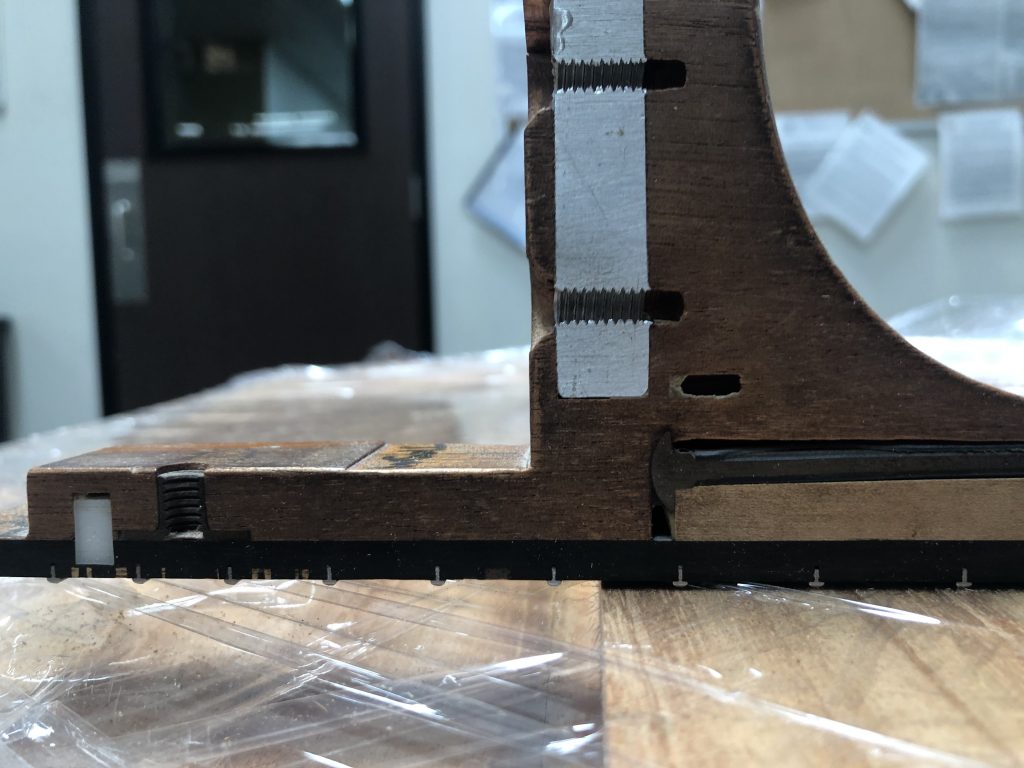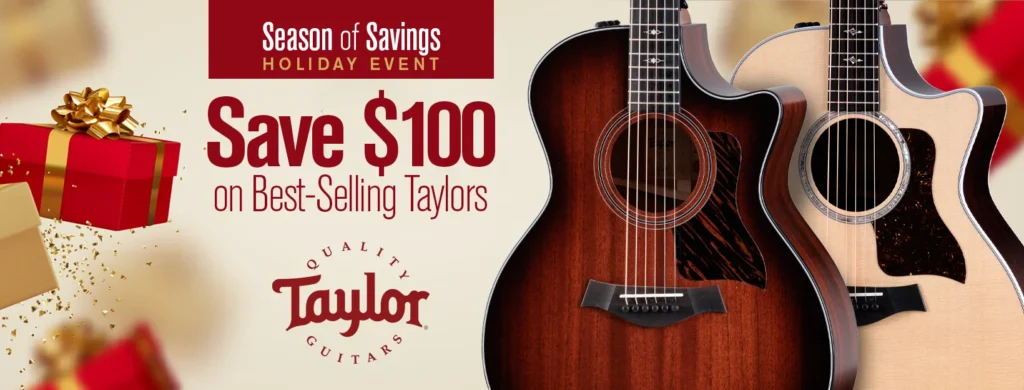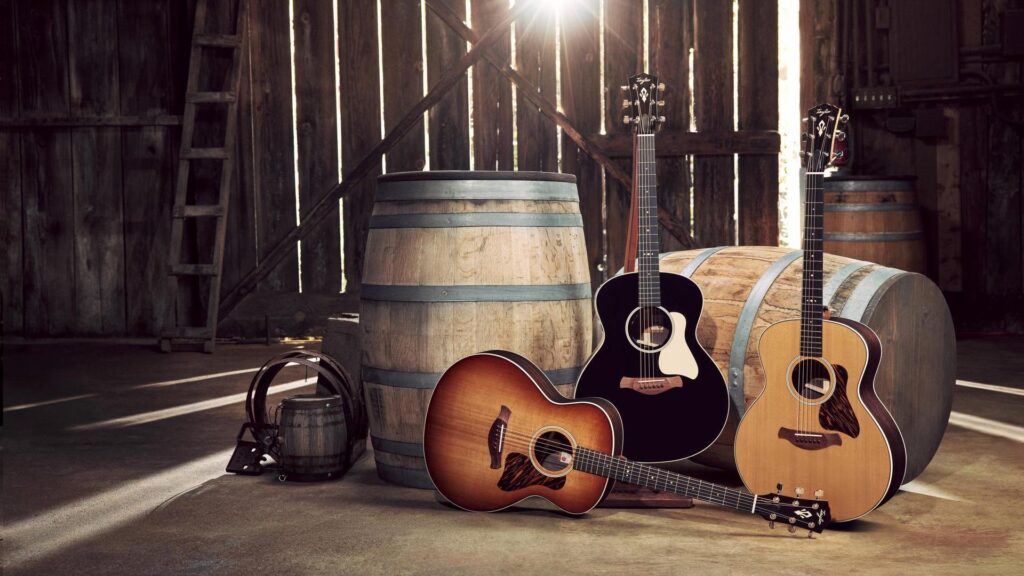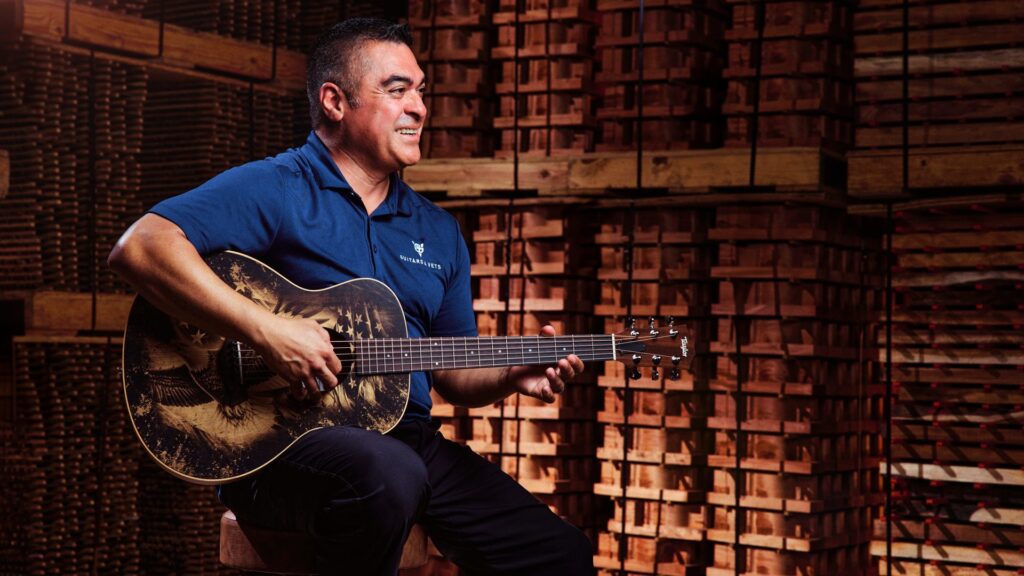The truss rod is one of the simplest parts of the guitar, and also one of the most important. Any budding musician who wants to invest in a guitar, whether acoustic or electric, should have at least a basic understanding of what a truss rod does, how it works, and what you can do with it to improve the feel and sound of your guitar.
What is the truss rod?
Let’s start from the beginning. A truss rod is a thin metal shaft that runs the length of the guitar’s neck from the nut to the heel, where the neck joins the body. It sits just under the fretboard and can be accessed through a small hole behind the nut on most guitars, which is usually covered by a small piece of wood or plastic held down by screws. On older nylon-string Taylors and models like the Big Baby, the truss rod is accessed through the soundhole; some other acoustic manufacturers still use this design today.
The photos below show a lengthwise cross-section of a Taylor guitar neck, revealing the truss rod inside.
Figure 1: The truss rod at the headstock

Figure 2: The truss rod at the heel

What is the truss rod for?
The truss rod’s primary function in both electric and acoustic steel-string guitars is to stabilize the neck against the tension of the strings, which exert a great deal of force on the guitar—for light gauge acoustic strings, up to 180 pounds, pulling up on the neck and bridge. The truss rod is there to balance out that tension so that the neck doesn’t bend from the pressure.
In practical terms, the truss rod becomes important when a player needs to adjust the relief of their guitar’s neck to suit their playing style. This is a stylistic choice that depends on the player’s technique—there’s no one right setting for every player.
A common myth about the truss rod is that its function is to set the action of a guitar, which isn’t strictly true. Action, which refers to the distance between the strings and the neck—informally, how difficult it is to press down the strings to play the instrument—is often the first thing a seasoned guitarist will test when playing a new guitar. Turning the truss rod might be a step in setting the action, but it won’t “fix” the entire neck—you may need to adjust the neck angle or the saddle to get the action just right all the way down the neck. If, say, you attempt to use the truss rod to correct a low neck angle (with the strings too high off the fretboard), you could overcompensate and end up with fret buzz.
How do I adjust the truss rod?
As long as you’re just looking for a minor adjustment for your neck and not a complete reset of the guitar’s action, there’s really no reason why you can’t tweak the truss rod on your own guitar at home. Here’s Glen Wolff, Taylor’s Customer Service Manager, on adjusting your own truss rod:
There are a lot of myths and scary stories about adjusting the truss rod. People are told, “Don’t touch it, you could snap it,” or “Just adjust the saddle, it’s safer than messing with the truss rod.” Some of this comes from stories of older guitars that someone may have had issues with. But here’s what you really need to know. Modern guitars have working, stable truss rods. The truss rod is in the neck so that the neck can be adjusted. It’s meant to be used to add or reduce the relief in the neck, to compensate for the string tension pulling on it. There’s no risk in making a truss rod adjustment to your Taylor. Follow our instructions and watch the video demo on our website and you’ll be better off for knowing how to do it.
It’s pretty simple. Sight down the neck of your guitar from the headstock, checking for any bowing in the middle of the neck. If the neck curves bows down away from the strings, try tightening the truss rod by twisting it a quarter- or half-turn clockwise. If the neck bows up toward the strings, loosen the truss rod by turning it counter-clockwise. Righty-tighty, lefty-loosey.
That’s it! If adjusting your truss rod doesn’t solve your problem, it’s wise to bring your guitar to an experienced tech or luthier—or if you have a Taylor, call our customer service line for help, and we’ll direct you to the Taylor-authorized service center nearest you.



























